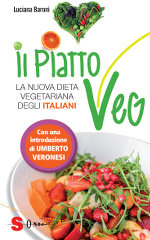
Fruit
Basic rules
- Consume whole fresh fruits (not juice, puree, fruit in syrup, etc.).
- Choose from different fruit qualities, in season, of different colors.
- Give preference to organic produce.
- Eat fruit on a regular basis, every day, but do not overdo it with the quantity (average 2-3 fruits a day are fine , depending on energy needs).
What are fruit

Fresh fruit is preferable, but this group also includes fruit juices, dehydrated or dried fruit, fruit in syrup and frozen fruit.
It is a food whose consumption is encouraged by international dietary guidelines, as it is rich in fiber, folic acid, beta carotene, potassium, vitamin C and phytochemicals.
It is important not to confuse dried fruit with nuts. Nuts are a part of a different food group, because it has different nutritional characteristics: walnuts, hazelnuts, almonds, etc., all fruit "in a shell". Dried fruit, which is properly part of the fruit group instead, is simply fresh fruit that has been dried, i.e. deprived of water, and will keep its original content of nutrients (weighing less, it will have a higher energy and nutritional density). There are several types of dried fruit: apricots, figs, plums, grapes, etc.
There are many varieties of fruit, domestic and exotic. Bearing in mind that seasonal fruit is always given the preference, here is a list of the most popular fruits in the market.
- Common fruit: apricots, figs, apples, pears, peaches, plums, grapes.
- Citrus fruits: oranges, clementines, lemons, mandarin oranges, grapefruit.
- Wild berries: cherry, strawberry, raspberry, blueberry, blackberry.
- Melons: watermelon, cantaloupe, honeydew melon.
- Exotic fruit: pineapple, avocado, banana, coconut, kiwi, mango, papaya.
- Dried fruit:: dried and dehydrated apricots, dried dates, dried figs, dried apples, dried and dehydrated peaches, dried prunes, raisins.
- Fruit juices: apricot, orange, apple, pear, grapefruit, grape, etc.
- Fruit in syrup: pineapple, cherries, fruit cocktail in syrup, peaches, etc.
- Miscellaneous: carob, chestnut, medlar, olives, etc.
The nutrients
Fruit is rich in protective substances for health: vitamin A, in the form of beta carotene (found particularly in yellow-orange fruits); vitamin C (particularly citrus and kiwi); folic acid; potassium; phytochemicals. Certain fruits are also rich in calcium and iron, especially if dried or dehydrated: figs, apricots, plums, peaches, grapes, strawberries and other berries. Thus it is a food that should regularly be part of anyone’s diet, even that of the omnivores.
Despite being rich in fructose, fruit is low in calories because it is rich in water and fiber.
Most fruit is low in calories, fat and sodium. It contains no cholesterol. It should be eaten raw and whole, not as fruit in syrup or as a juice, otherwise it adds empty calories and penalizes the intake of fiber.
Fructose, fruit sugar, has a very mild effect on blood glucose, especially when it is associated with the presence of fiber, unlike what happens with glucose, the simple sugar present as an ingredient in desserts.
Some fruits are also good sources of iron, which is well absorbed thanks to the simultaneous presence of vitamin C. Some fruits are also good sources of calcium and all are rich in phytochemicals.
Health benefits
The characteristics of fruit are similar to those of vegetables, but being more caloric than vegetables, it is less nutritionally dense than vegetables, so it is recommended to consume less, but nevertheless some each daily.
Eating fresh, whole fruit, in the context of a varied and balanced diet, reduces the risk of major chronic diseases. It can reduce the risk of cardiovascular disease, and stroke and of type 2 diabetes mellitus. It can provide protection against certain cancers, especially those of the digestive tract.
It also reduces the risk of coronary heart disease, helps maintain weight under control, and regulates bowel function.
Thanks to content in potassium, it may decrease the risk of developing urinary tract stones, reduce bone loss, and have a positive effect on blood pressure.
The intake of the calcium contained in some fruits is beneficial as it not linked to consumption of protein and animal fats, but is coupled instead to other useful substances helpful to bone health (potassium, Phytoestrogens, vitamin K).
Useful advice
-
Keep fruit always at home, and eat it during snacks. Eat it fresh, as soon as possible after purchase, because over time its nutrients denature.
-
Choose only seasonal vegetables: it is more flavorful, economical and allows you to naturally vary the types of vegetables consumed.
-
Choose fruit of varied color and don’t forget wild berries.
-
Avoid juices and give preference to whole fruit.
-
Fruit can be eaten dried or dehydrated, but avoid hypercaloric fruit (candied or in syrup). If canned fruit is used, make sure there is no sugar added.
-
Fruit can be used in the preparation of desserts in order to avoid or lessen the use of sugar.
-
Use the fruit for breakfast, for example as fruit salad, along with a bowl of cereal or with sliced bread.
-
It is also great as a snack: a banana, an apple, plums, are a sweet snack low in calories.
-
Use it diced in salads.
-
Eat fruit between meals, especially in case of slow digestion.
-
Remember to wash it and brush it well to eliminate residues of chemicals or microorganisms of the soil and then dry it before using.
-
Up until 2 years of age, children need to use fruit juice rather than whole fruit because of the need to limit fiber intake.
-
From 2 years of age on up, encourage your children to eat whole fruit, chewing it very well, or prepare colored fruit salads or skewered fruit, to help them to consume more.
-
Instead of candy, offer dried fruit to your children, like figs, apricots, raisins and as a beverage, instead of carbonated drinks, juices.
The Food Groups
VegPlate - the books

